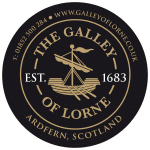
history of
Ardfern, Craignish & The Galley of Lorne Inn
"Mid-Argyll is an area steeped in history and legend. Castles, standing stones, cairns and artefacts at every turn. Kilmartin Glen with its remnants of the Bronze Age and Dunadd, the birthplace of Scotland and capital of the ancient kingdom of Dalriada."
Ardfern (Gaelic: Aird Fheàrna = “the head-land of alder-trees”) is a village in Argyll and Bute, Scotland. It lies on the south coast of the Craignish peninsula, facing Loch Craignish.
HISTORIC FACTS
After 1778, when most of the peninsula was in the ownership of the Campbells of Craignish, who had been the dominant local clan since the earliest recorded times around 1100, parcels of land were gradually sold off, and by 1850 most of the land was part of two estates ; Lunga, purchased by the MacDougalls (of Lunga island), to the north and the Craignish estate to the south end of the peninsula. This division essentially remains the same today.
There is evidence of habitation going back to pre-history. Contemporaries of St. Columba settled by 600AD and the earliest church on the peninsula, Kilvaree, now a ruin, is 12th Century or earlier. Until modern times farming was the main occupation and cattle from the off lying islands, Jura, Scarba, etc., were landed near Craignish point and driven along the peninsula to the mainland proper. Of the three inns that ‘supported’ the drovers only one, dating from the 17th – or even 16th century – now called the Galley of Lorne, survives in Ardfern. Farming, together with a busy weaving industry and three mills, carried on during the first part of the twentieth century.
The latter half of the twentieth century saw farming and traditional industry decline and the population fell to less than half its now 400+. The current Laird of Lunga, Colin Lindsay-MacDougall, saw that for the community to survive, things must change. To re-vitalise the area, he created a yacht centre at Ardfern to attract the ever increasing numbers of cruising yachtsmen on the west coast ; re-opened and developed our Inn (the Galley of Lorne), sold housing plots to attract people into the area, encouraged artists of all sorts and the trades-people necessary for a thriving community, to stay on his estate.
Ardfern today has a diverse and growing population. The school is thriving. The Yacht Centre, together with the new marina at Craobh Haven, harbours the largest fleet of cruising yachts on the west coast. Tourism and related businesses bring much income to the village, but there are many other small enterprises ; artists, musicians, sculptors, craftsmen and women, horticulturalists, film-makers, writers, computer based businesses, some of which are recognised internationally, and mail order businesses. There are plumbers, stonemasons, builders, joiners, furniture-makers, gardeners and horticulturists, woodworkers, electricians and many more. All living on the peninsula.
Ardfern is 16 miles from the nearest small town (Lochgilphead). To stay in the area, and to earn a living in such a place, takes a certain kind of mindset. It takes drive and dedication and initiative.
There is evidence of habitation going back to pre-history. Contemporaries of St. Columba settled by 600AD and the earliest church on the peninsula, Kilvaree, now a ruin, is 12th Century or earlier. Until modern times farming was the main occupation and cattle from the off lying islands, Jura, Scarba, etc., were landed near Craignish point and driven along the peninsula to the mainland proper. Of the three inns that ‘supported’ the drovers only one, dating from the 17th – or even 16th century – now called the Galley of Lorne, survives in Ardfern. Farming, together with a busy weaving industry and three mills, carried on during the first part of the twentieth century.
The latter half of the twentieth century saw farming and traditional industry decline and the population fell to less than half its now 400+. The current Laird of Lunga, Colin Lindsay-MacDougall, saw that for the community to survive, things must change. To re-vitalise the area, he created a yacht centre at Ardfern to attract the ever increasing numbers of cruising yachtsmen on the west coast ; re-opened and developed our Inn (the Galley of Lorne), sold housing plots to attract people into the area, encouraged artists of all sorts and the trades-people necessary for a thriving community, to stay on his estate.
Ardfern today has a diverse and growing population. The school is thriving. The Yacht Centre, together with the new marina at Craobh Haven, harbours the largest fleet of cruising yachts on the west coast. Tourism and related businesses bring much income to the village, but there are many other small enterprises ; artists, musicians, sculptors, craftsmen and women, horticulturalists, film-makers, writers, computer based businesses, some of which are recognised internationally, and mail order businesses. There are plumbers, stonemasons, builders, joiners, furniture-makers, gardeners and horticulturists, woodworkers, electricians and many more. All living on the peninsula.
Ardfern is 16 miles from the nearest small town (Lochgilphead). To stay in the area, and to earn a living in such a place, takes a certain kind of mindset. It takes drive and dedication and initiative.
WHY THE GALLEY OF LORNE INN?
The Galley of Lorne Inn was originally known as the Ardfern Inn. The Laird (Colin Lindsay-MacDougall) changed the name when he turned the place into a pub/hotel.
The Galley of Lorne is the Symbol of Somerled, Lord of Lorne, King of the Western Isles, who pushed out the Vikings and set up the present Clan system. His eldest son was Dougall, his second Donald, etc from whom the MacDougalls, the MacDonalds and several of the other clans are descended. The Campbells also used it after marrying heiresses. The MacDougall Galley is special as it depicts Somerled’s own Galley at the sea battle at the Isle of Man, when he finally defeated the Viking King of Man in a night battle, where he rallied his fleet by having a burning brazier at the top of his mast. The Campbell’s of Craignish also have a unique coat of arms, because they are descended from a MacDougall heiress. It consists of a Galley of Lorne with the shield of the Campbells superimposed. The MacDougall shield is the Galley of Lorne crossed with the Lion of Scotland to show how Royal MacDougalls are!
The Galley of Lorne is the Symbol of Somerled, Lord of Lorne, King of the Western Isles, who pushed out the Vikings and set up the present Clan system. His eldest son was Dougall, his second Donald, etc from whom the MacDougalls, the MacDonalds and several of the other clans are descended. The Campbells also used it after marrying heiresses. The MacDougall Galley is special as it depicts Somerled’s own Galley at the sea battle at the Isle of Man, when he finally defeated the Viking King of Man in a night battle, where he rallied his fleet by having a burning brazier at the top of his mast. The Campbell’s of Craignish also have a unique coat of arms, because they are descended from a MacDougall heiress. It consists of a Galley of Lorne with the shield of the Campbells superimposed. The MacDougall shield is the Galley of Lorne crossed with the Lion of Scotland to show how Royal MacDougalls are!
DID YOU KNOW?
Did you know that our very own Loch Craignish got a last minute starring role in a Bond thriller doubling as Yugoslavia.
The climatic scenes of the boat and helicopter chase where Sean Connery as Bond and Russian spy Tatiana Romanova (Daniela Bianchi) are escaping from the SPECTRE forces, were originally due to be filmed in Turkey.
After production difficulties, filming was relocated to Argyll. The explosion scenes were rigged in Pinewood studios.
The climatic scenes of the boat and helicopter chase where Sean Connery as Bond and Russian spy Tatiana Romanova (Daniela Bianchi) are escaping from the SPECTRE forces, were originally due to be filmed in Turkey.
After production difficulties, filming was relocated to Argyll. The explosion scenes were rigged in Pinewood studios.
THE GALLEY OF LORNE POEM
(WORDS BY EWAN MCVICAR)
(WORDS BY EWAN MCVICAR)
Tune The Broom of the Cowdenknowes.
City life’s all right, the bars are bright at night,
City girls are easy with their smiles,
The money’s pretty good, but I drink more than I should,
And always my thoughts run to Argyll
My heart returns to the hill above Ardfern
Golden islands burning in the sea
And the Galley of Lorne, bright in the morning
Calling across the years to me
The empty hills, the sleepy drovers inn
Strong reeds bowing to the breeze
Sailboats glide, nodding on the tide
All the world’s at quiet ease
The Galley of Lorne, I hear the helmsman’s horn
Banked oars sighing in the surf
Murmuring sail, dreaming of the gale
Ah, the dear land of my birth
City life’s all right, the bars are bright at night,
City girls are easy with their smiles,
The money’s pretty good, but I drink more than I should,
And always my thoughts run to Argyll
My heart returns to the hill above Ardfern
Golden islands burning in the sea
And the Galley of Lorne, bright in the morning
Calling across the years to me
The empty hills, the sleepy drovers inn
Strong reeds bowing to the breeze
Sailboats glide, nodding on the tide
All the world’s at quiet ease
The Galley of Lorne, I hear the helmsman’s horn
Banked oars sighing in the surf
Murmuring sail, dreaming of the gale
Ah, the dear land of my birth


